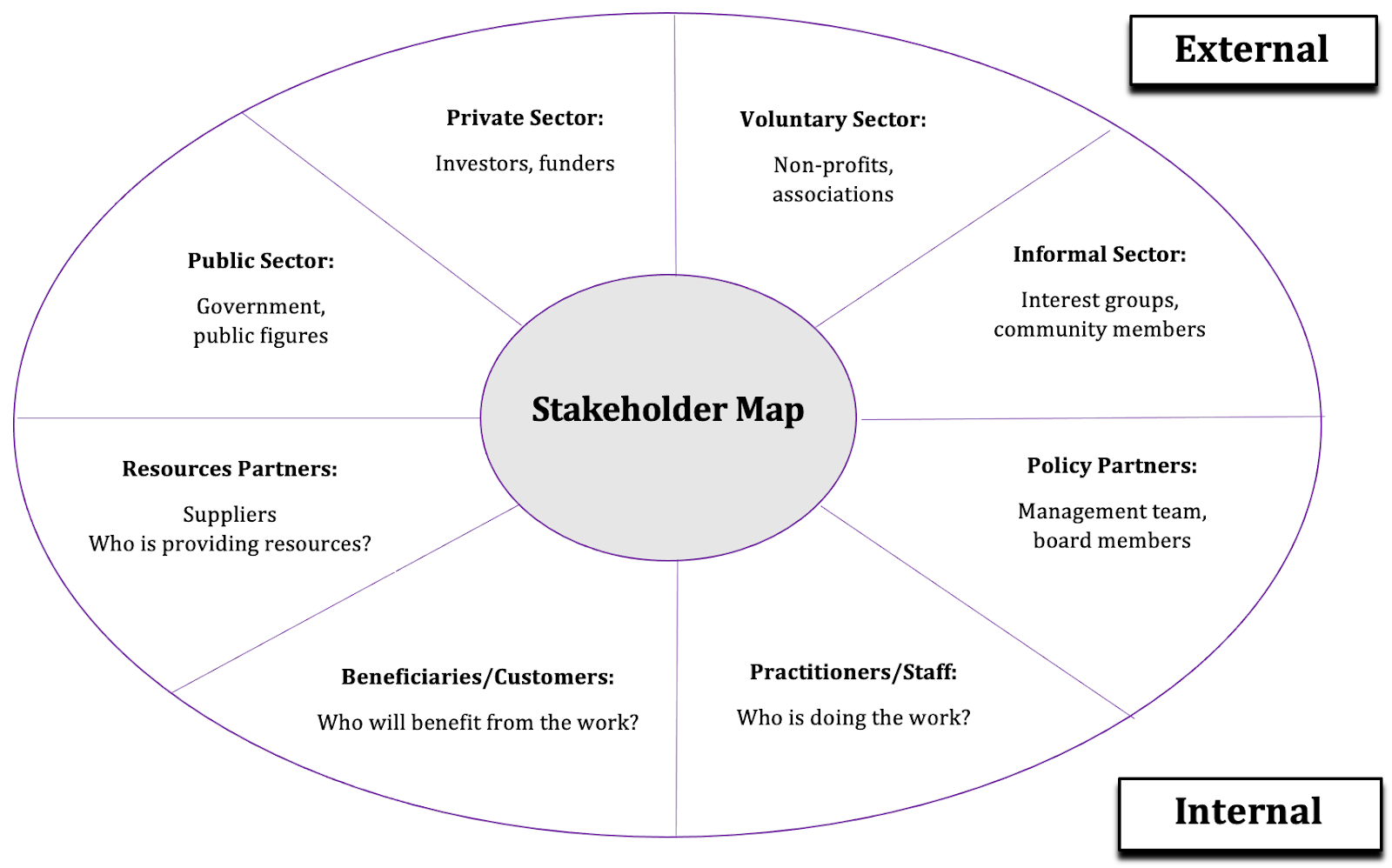There are two primary groups of people involved in your organization’s strategy work:
- Participants: The people who will attend the planning events.
- Stakeholders: The people who will be affected by your results.
Depending upon their lived experiences, tenure in your industry, engagement with your organization, and a host of other factors, the opinions, insights, and recommendations of your members are going to vary greatly. Want to test it out? Ask a group of 10 members how to solve just about anything and you’re likely to get several dozen suggestions.
And that’s because how people see the world, including the blocks and barriers impeding our organizations from achieving their preferred visions, varies. Take the image below, for example. Two different people standing on either side of the exact same symbol on the ground see it from their own unique vantage points.

The aha moment is this: Neither person is wrong. We’re moving beyond either/or thinking here. Neither person wins or loses. The symbol on the ground is both a six and a nine depending on your perspective. And in a recent strategic planning session, a participant even raised a third option: “It’s the letter g!”
In this case, we’re exercising both/and thinking where different perspectives can be raised and married and iterated to create third, fourth, and fifth options that are significantly better than any one person could raise on their own. When you consider the 20 to 25 people we normally engage during a strategic planning session, you can begin to see the power that perspective brings.
Participation, in fact, is needed from 100 percent of participants (on behalf of stakeholders) in order to see the full, 360-degree picture. Though participation won’t necessarily mean or look the same for everyone (e.g., some people are more introverted and prefer individual and quiet processing time while others are more extroverted and prefer the energy that comes with both small and large group discussions), each person should engage at different levels based upon their needs and the needs of the stakeholders they represent (even if it’s to simply affirm a currently made decision).
Non-participation means we miss out on those perspectives -- the way in which they see the issue at hand and how it impacts the stakeholders they ultimately represent. Participation is not just a "good idea" to keep people appeased, but it is absolutely necessary to see all elements of a particular problem that needs to be analyzed and solved.
Often, during planning events like strategic planning, our default participant list is our board of directors. And while this can be a good place to start, it may be lacking key/aspirational demographics and, therefore, the diverse perspectives we’re seeking as we set out to make change. In the end, our strategy work will only be as good as the foundation upon which we build it. And if key ideas, insights, and perspectives are left out, the strategy becomes an unstable house of cards likely to collapse under the most basic of tests.
As groups evaluate the participants they wish to engage in their planning events, they should consider at least two lenses:
- Industry/organization segment.
- Diversity, equity, and inclusion (DEI).
In the first lens, using the stakeholder map below, organizations should intentionally determine which of these key segments they wish to include and exclude from their planning efforts. While not all may apply, this should push groups to really consider their audience in new ways. Other relevant industry/organization segments not represented in this image may be easily added, as appropriate.

Once that initial participant list is built, it’s important to review it from the second lens: diversity, equity, and inclusion. DEI elements may include, but are certainly not limited to:
- Race/ethnicity
- Gender/sex
- Socioeconomic class
- Education level
- Religion
- Physical appearance
- Age
- Sexual orientation
- Ability
- Nations of origin/citizenship
While you may not have access to (and, frankly, may not wish to collect) all of this demographic data for your members, determine what data you do have and use it to make good decisions about who to engage. But do it in an authentic and non-tokenistic way.
There’s certainly no point in having a diverse cross-section of your membership by industry/organization segment only to discover that everyone is white and/or a cisgender heterosexual man. This would inevitably result in a very one-dimensional strategy that doesn’t meet a majority of your stakeholder’s needs (particularly if your goals include engaging younger and more racially diverse members).
But there’s also no point in tokenizing a person of color, a transgender person, or a person who uses a wheelchair. If we assume that a single person could never reasonably speak for an entire demographic of people, and instead tap into their unique insights and perspectives having lived a life that’s different from other participants and stakeholders, we’ll more successfully model our values around diversity, equity, and inclusion.
Although this may seem like a tedious process for identifying and selecting planning participants, it’s vitally important to ensure you’re not missing valuable information about the challenges your organization is trying to solve, as well as the various strategies and solutions that are most likely to help you and your stakeholders overcome them.
If you or your team has further insights about stakeholder mapping and why it’s important, please share with us your tips, tricks, and recommendations using the comments below or by emailing us at [email protected].


